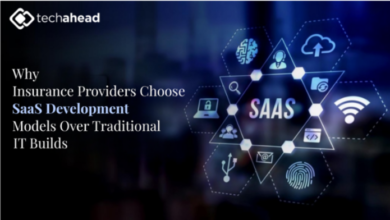Building Scalable Compliance in Modern Financial Enterprises

Financial enterprises are expanding at a faster rate than ever, but with growth comes increased regulatory pressure. Every product launch, partnership, and market expansion adds new compliance demands.
Fintechs are embedding payments and credit products across industries. Crypto firms are scaling into new jurisdictions while facing stricter oversight. Banks are tightening sponsor programs to manage partner risk. Private equity firms are requiring portfolio-wide transparency.
Yet many organizations still rely on outdated frameworks and overstretched teams. Scaling compliance without sacrificing efficiency is now a strategic necessity.
Modern enterprises are turning to specialized solutions like Fraxtional to build flexible, director-led compliance leadership that fits growth without the cost of full-time hires. The new model emphasizes adaptability, data intelligence, and automation—critical traits for long-term success in financial regulation.
Understanding the Compliance Landscape in 2025
Global financial regulation is expanding more rapidly than the organizational capacity to manage it effectively. Enterprises now operate in a fragmented environment characterized by regional regulations, frequent updates, and overlapping requirements.
Evolving Regulatory Complexity and Global Fragmentation
Regulatory frameworks across the United States, Europe, and Asia are evolving in parallel but not in sync.
Common challenges include:
- Conflicting definitions of payment and money movement across jurisdictions.
- Country-specific data protection and residency laws.
- Local licensing rules require distinct documentation and reporting.
A fintech operating in multiple countries may face different AML standards, data formats, and regulator expectations—all at once. The lack of global standardization increases compliance workload and costs.
Scalable compliance now depends on unified frameworks that apply consistent policies while meeting local regulations.
The Rising Stakes of Financial Crime and Compliance Failures
The global cost of financial crime, including money laundering, fraud, and sanctions evasion, exceeds $2 trillion annually. Regulators have responded with stricter enforcement and broader accountability.
Key developments:
- Fintechs are expected to match the AML rigour of traditional banks.
- Crypto platforms must meet VASP registration and FATF Travel Rule standards to comply with regulatory requirements.
- Banks are now liable for the compliance controls of their fintech partners.
The consequences of non-compliance include fines, license suspension, and loss of banking relationships. Beyond penalties, reputational damage can derail funding and partnerships.
For enterprises aiming to scale, strong compliance systems are not optional—they are foundational.
The Role of Automation and AI in Scalable Compliance
Automation and artificial intelligence are transforming compliance from manual oversight to continuous monitoring. These technologies reduce human error, improve speed, and allow compliance teams to focus on strategic decision-making.
Autonomous AI Agents Driving Compliance Efficiency
AI agents now handle tasks that once required entire teams to complete.
Standard automated functions include:
- Transaction monitoring: Detecting suspicious activity instantly across large data sets.
- Customer due diligence: Automating verification, risk scoring, and updates.
- Adverse media screening: Identifying high-risk individuals and entities in real time.
Multi-agent systems can share insights, learning from one another to strengthen detection accuracy. This improves both compliance precision and operational efficiency while minimizing manual workload.
Predictive and Real-Time Monitoring Powered by AI
The shift from reactive investigation to predictive detection marks a significant step forward. AI-based compliance systems can identify emerging risks before violations occur.
Benefits include:
- Detecting anomalies and transaction patterns proactively.
- Reducing false positives in fraud and sanctions checks.
- Enabling real-time alerts to compliance teams.
This proactive approach turns compliance from a defensive process into an active protection mechanism for the enterprise.
Unified Compliance Platforms as a Foundation for Scale
As compliance complexity grows, data and workflow fragmentation can undermine oversight. Unified platforms centralize compliance information, providing leaders with a comprehensive view of risk exposure and controls.
Centralizing Compliance Data for Holistic Oversight
Multiple systems for onboarding, monitoring, and reporting often create silos that slow investigations. A unified case management system eliminates these barriers.
Key advantages:
- A single source of truth for customer and transaction data.
- Improved traceability for regulator or auditor reviews.
- Faster, more consistent investigations.
Consolidation supports decision-making and enables teams across regions to act with the same information and standards, ensuring consistency and alignment.
Integrating Generative AI to Streamline Compliance Workflows
Generative AI is improving the quality and consistency of compliance documentation.
Practical applications include:
- Drafting Suspicious Activity Reports (SARs) using standardized templates.
- Producing consistent audit-ready summaries.
- Generating structured compliance reports from large data sets.
These capabilities free compliance professionals from repetitive reporting tasks, allowing them to focus on complex, high-value investigations.
Managing Data Governance and Risk at Scale
As enterprises collect and process massive amounts of data, maintaining control, accuracy, and integrity becomes critical.
Overcoming Data Volume, Quality, and Lineage Challenges
Data-driven compliance relies on traceable and reliable information. Errors in source data can cascade into false alerts or incomplete reports.
Key priorities include:
- Establishing strong data validation and reconciliation processes.
- Tracking data lineage from source to regulatory output.
- Using metadata-driven governance to maintain accountability.
By maintaining transparency from input to outcome, enterprises can prove compliance integrity under scrutiny.
Vendor and Third-Party Data Risk Management
Financial enterprises increasingly depend on vendors for payments, analytics, and KYC services. Each vendor introduces potential risk.
Best practices for managing vendor compliance:
- Conduct due diligence before onboarding service providers.
- Require certifications such as SOC 2 or ISO 27001.
- Monitor vendor compliance performance continuously.
This ongoing oversight reduces exposure from external failures and ensures that third-party systems meet regulatory expectations.
Flexible Compliance Models for Modern Financial Enterprises
The speed of financial innovation demands adaptive compliance structures. Traditional hiring and static teams cannot keep pace with regulatory changes.
Fractional and Embedded Compliance Leadership
Fractional compliance leadership offers senior expertise without permanent staffing costs.
Key benefits:
- Access to experienced CCOs, BSA Officers, and MLROs on demand.
- Temporary leadership coverage during audits or transitions.
- Flexible resourcing aligned with business scale and funding stage.
This approach provides the depth of executive compliance leadership without overextending budgets or headcount.
Collaborating Across Teams with Compliance as a Service (CaaS)
Compliance as a Service integrates experienced professionals and technology directly into enterprise operations.
Advantages include:
- Seamless collaboration with product, finance, and operations teams.
- Shared digital environments for document and case management.
- Consistent guidance aligned with global and local regulatory needs.
This hybrid structure enhances responsiveness and ensures that compliance grows in tandem with innovation.
Future-Proofing Compliance for Emerging Risks
The regulatory focus of the future extends beyond financial transactions. AI governance, sustainability, and data ethics are fast becoming central to compliance obligations.
Adapting to AI Governance and New Regulatory Frameworks
As artificial intelligence becomes integral to financial systems, regulators are focusing on algorithmic transparency and accountability.
Enterprises should prepare by:
- Documenting AI model development and decision processes.
- Establishing internal AI oversight and ethics policies.
- Ensuring explainability in automated risk assessments.
Early governance builds regulator confidence and prevents costly system reengineering later.
ESG and Sustainable Finance Compliance
Environmental, social, and governance (ESG) compliance is now a regulatory and investor priority.
Current trends include:
- Mandatory ESG disclosures for regulated entities.
- Sustainability assessments for investment portfolios.
- Integration of ESG scoring into risk and compliance frameworks.
By embedding ESG tracking within compliance systems, enterprises can meet both financial and ethical mandates simultaneously.
Conclusion
Compliance in modern finance is no longer a back-office function; it is a core business function. It is a strategic enabler that supports market expansion, investor trust, and operational stability.
To thrive, financial enterprises must design compliance programs that are scalable, technology-enabled, and adaptive to global change.
Automation, unified data systems, and flexible leadership models will define the next generation of compliance. Those who invest in scalable frameworks today will face fewer disruptions tomorrow.
Building compliance that grows with the business is not just efficient—it is essential for sustainable success in finance.



